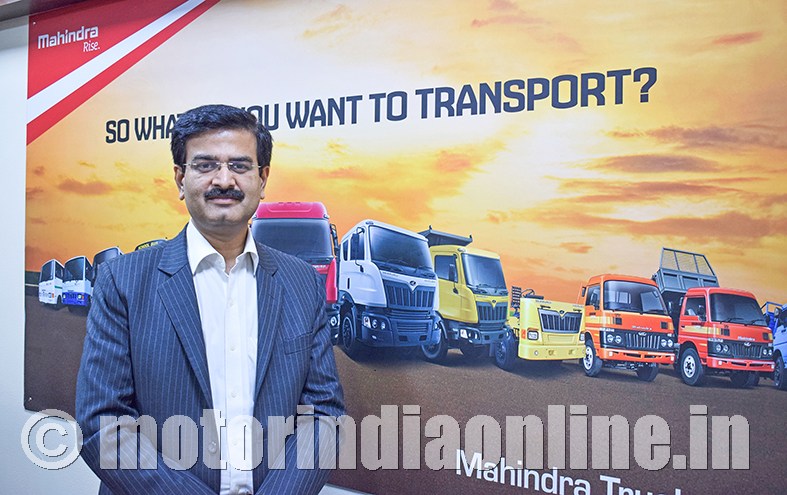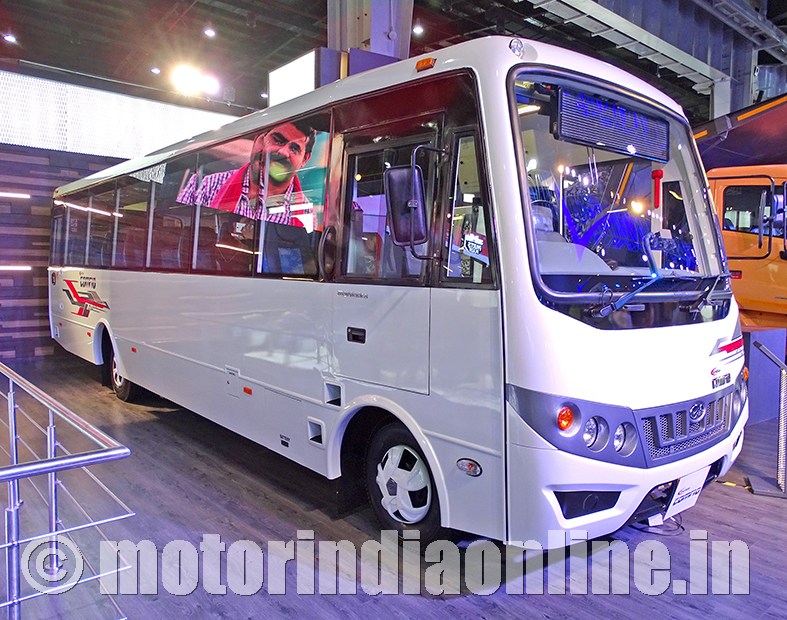Mahindra and Mahindra is quite new to the CV industry formally, but the company holds a much longer and deeper experience in the mass transportation of passengers. Its ‘Maxi Cab’ passenger van of 1990s became a mainstay in local tour and school operations in the country, especially in semi-urban and rural markets, some of them are running strong even today. Building further on that legacy, the company expanded its passenger CV portfolio with well-thought out products. Buses are currently available under Mahindra moniker up to 9T GVW category for almost every applications. An electrified-version of the ‘Cosmo’ bus and ‘Supro’ passenger minivan was also presented recently.

In a bid to get the homegrown company’s perspective and vision for the bus industry in the country, MOTORINDIA spoke to the CEO of Mahindra Truck and Bus Division, Mr. Vinod Sahay. Here are the excerpts from the interaction:
Buses and sustainable mobility
Buses have played major role in mass transportation next to railways since the very beginning. They offer last mile connectivity in public transportation. We should promote public transport system to reduce use of personal transport where ever possible to help improve on air quality and reduce traffic issues which we are facing in major cities. They are the harbingers of sustainable mobility in India.
Thus, we foresee a bright future in this regard. There has been a lot of focus electric buses in last two years, with Government funding and subsidies. As an OEM, we at Mahindra are also investing on development of zero emission vehicles for the masses.
Evolution and key takeaways
Bus transportation has come long way in India from one-bus-for-all application concept to customised buses for various applications like city bus, school bus, Tarmac coaches, intercity bus, and so on. Implementation of Bus Body Code has helped industry to standardize the bus designs for different applications.
Emerging trends in bus industry would be mainly from stakeholders point of view like levels of comfort, safety features like CCTV/VTS, features offered, type of services and spares packages offered like AMC, life cycle cost, buy back guarantee, low cost vehicle funding, insurance package, etc.
Our readiness
Our product comprises of three platforms Excelo, Cosmo and Comfio, catering to entry level and mid-premium segments. Seating capacity of the buses start from 12+D to 40+D on 2×2 configuration. We also offer maximum 64+D school bus on 3×3 seating on 9 T platform. We have three engine options for bus platforms, namely, 2.5, 2.6, and 3.3-litre with both diesel and CNG options.
We are pioneers in offering CRDe technology on buses and LCV platform for over one decade. We offer class leading MPFI technology on CNG bus platform. With the industry expanding, we are also exploring new commercial vehicle segment, especially in buses. We have fully equipped bus R&D team based out of our Pune office. We need to focus on innovations in bus designs and alternative materials to make bus more light in weight meeting safety requirement so they the TCO become further attractive to customers.
Improving rider comfort and safety
We have seen steep changes in growing demand for improving ride comfort and safety aspect. To meet these changing demands of ride comfort, we have started offering air-suspension on our 32+D onwards bus platforms. We also offer many safety features on our buses which make them best choice for those who go for safety. We offer CCTV, VTS, full metal fascia, full length foot step, tooth guard, grab handle at suitable places, two emergency exits among others to make our buses safest amongst all the offerings in the industry. Safety is a strong pull factor in buses, especially while considering the demand for such products.
Future is electric
Everybody has realized the importance of reducing the dependence of fossil fuel. World is moving very fast towards EVs looking at the benefits like zero emission at site, less moving parts, low on maintenance, efficiency if very high, no wastage of fuel energy when vehicle is stationary. Challenge we are facing is how to make the electric vehicles more affordable in India. Lot of work need to happen on development of affordable battery. Yet another challenge is uninterrupted supply of electricity for operation of these vehicles (in the form of infrastructure of charging points).
Mahindra is fully committed to the EV vision in India, a pioneer in that regard as well. We already have our complete bus range with clean fuel, i.e., CNG. We are also working on electric bus platform which was displayed at Auto Expo 2018. Buses used for public transport system should be on priority for shifting to electric buses. We need to work with hand in hand with Government of India for developing & manufacturing of affordable battery locally. This would help to bring down the acquisition cost of electric vehicles.
“With the industry expanding, we are also exploring new commercial vehicle segments, especially in buses.
– Mr. Vinod Sahay
